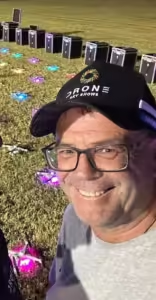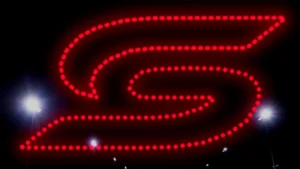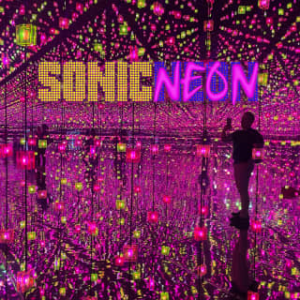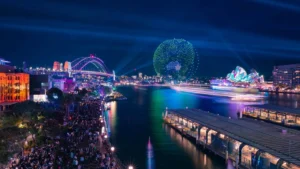Behind the scenes: How are drone light shows designed
In our previous blog post “The art of drone light creation” we spoke about how drone light shows are created. And you might wonder, “How is the actual show designed?” In this article, we dive deeper! Interviewing Drone Sky Shows designer Bing Lee, who takes you behind the scenes of what it’s like to be a drone light show designer.
What are the initial steps you take when first starting to work with a client?
Well, it depends largely on the clients.
Some clients are very clear about what they want to achieve. For these clients, we need to communicate and understand their intentions in-depth and discuss with them the upper limit of the drones, what effects are achievable, and what might be limited, and then we work from there.
Conversely, some clients want to see what we can offer before deciding. So we usually show them our previous cases and wait for their decision before designing the storyboard.
What sort of information do you collect to create their story or desired outcome?
Some clients have particular requirements and even designed the layout of the drone dots. In this case, we just have to accomplish the effect they want to achieve as close as possible.
For clients with less specific requirements, we usually need to know what occasion they intend to use it for, such as celebrations, grand openings, personal events like marriage proposals, etc. By showing them our previous cases, we can learn about their style and design to their needs.
What is the process from the first conception of the design to the delivery of the final work?
The models representing the drone are first created in 3D software, and then the animation for each scene is constructed based on the storyboard. Then the transitions between scenes are designed and finally, the light effects are added.
The most critical and time-consuming part of the process is checking whether the drones’ speed, acceleration, spacing and other details exceed their upper limits to ensure they fly safely.
What got you interested in this field?
I have an engineering background. I actually obtained my PhD in engineering several years ago but I have always been passionate about art and design, taking art courses and attending art school in my spare time. I established a scientific 3D animation and illustration studio after moving to Perth, WA.
By chance, I came across this job. It combines my design skills and engineering background very well. This job is just the ideal job for me.
What does it take to be a drone show designer? What qualifications and skills are needed?
The first thing is the ability to understand customer needs, which means you have to be a good listener.
In addition, besides some design skills, an engineering background or engineering-like way of thinking is also essential for this job. The primary ability of an engineer is to find problems and solve them independently. In the process of designing and getting the drones through flight testing, there are many problems that we will encounter and need to solve on our own. So personally, I think a sound engineer with some design skills is ideal for this job.
What is your favourite part of being a drone show designer?
My favourite part is standing among people, seeing my designs go up in the sky, and hearing their joyful exclamations. That’s the most satisfying part for me.
We would love to design an individually tailored drone light show for your next event too!
Contact us today for a FREE custom quote!







